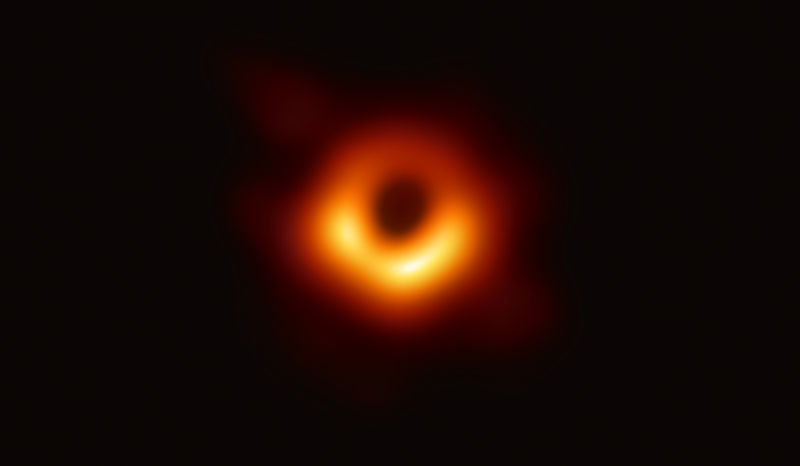
A black hole is a region of space where the force of gravity is so intense that to escape requires a velocity greater than light.
If you throw a ball up into the air, it quickly returns to the surface of the Earth.
The harder you throw it, the faster it will travel when it
leaves your hand, and the higher it will go before returning.
In theory if you could throw it hard enough it would leave the Earth's surface and go into orbit, or even
escape the Earth's grip altogether. The gravity of the Earth will not be enough to return it to the
surface if it travels fast enough. The speed that the ball must have in order to escape
is known as the escape velocity, which for the Earth is about 11 kilometers per second
or 24,000 miles/hour.
As a mass is compressed into a smaller and smaller volume, the gravitational attraction at its surface
becomes more severe, as though it is being concentrated. This means the escape velocity at the surface
is higher. Objects have to travel faster in order to escape into space.
Eventually, if the mass is concentrated enough, a point is reached when not even light travels
fast enough to escape. This extreme condition, by definition, is a black hole.
Gravity exerts crushing pressure on a star.
Meanwhile, as long as its fuel lasts, the core of a star generates radiation through nuclear fusion.
This radiation creates an outward pressure that balances the inward pressure of gravity caused by
the star's mass. As the star's fuel is exhausted, gravity begins to win the fight which
compresses the star inward.
If the mass is high enough the star will eventually collapse. It is believed
that high mass stars eventually become black holes.
In the crowded cores of galaxies it is believed that millions of stars have combined to form supermassive
black holes. This is the simplest explanation for the high velocities we measure for stars orbiting near
galactic cores. Our own galaxy, the Milky Way, is theorized to contain a black hole in the core on the
order of 4 million solar masses.
On April 10, 2019 the collaborative work of more than 200 scientists was published which included
the first image of a black hole,
obtained using Event Horizon Telescope (EHT) observations. The object is at the center of galaxy M87.
It is about 6.5 billion solar masses and 55 million light years away.
There is much in the image to confirm
current models of black holes based on Einstein's theory of general relativity. The bright ring of light is
not as simple as it appears. It is light from both in front and in back of the object, but the intense gravity
is bending the light from the front, around the backside, and returning it on a path back to the observer (earth).
 Credit: Event Horizon Telescope Collaboration
Credit: Event Horizon Telescope Collaboration